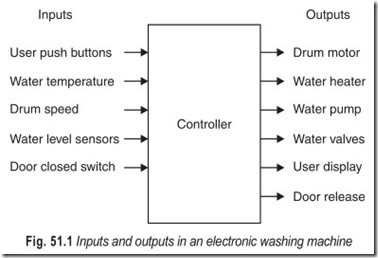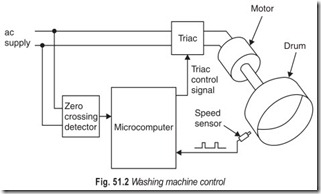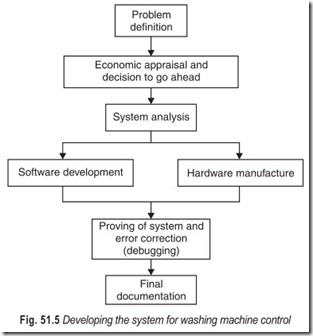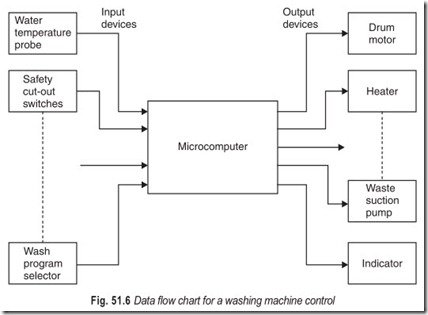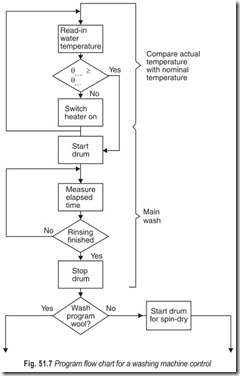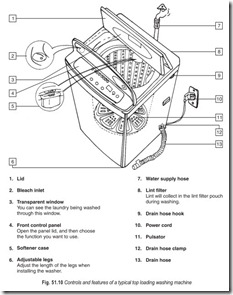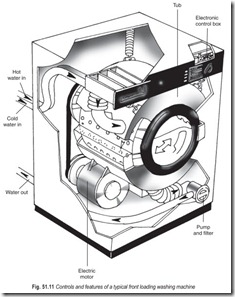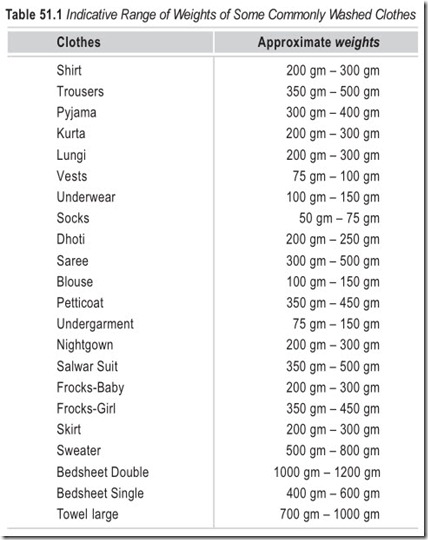WASHING MACHINES
From the first washing tool, a broom with four fingers at the bottom to move the clothes around the bucket, to the modern fully automated ones, washing machines have come a long way. Technological advancements have brought about metamorphic changes in washing machines. From manual washing machines requiring hot water soak before dirty clothes got churned in machines to semi-automatic with spin dry facilities to fully automatics and now recently introduced Fuzzy logic the concept of machine wash has totally changed. Multinational companies (MNCs) dealing in electronics have launched new and modern techniques in washing machines.
In today’s high- stress life a washing machine has become a household necessity. Washing machines are gradually emerging as an omnipresent dhobi in Indian homes. Fortunately the choices are many. Not only in colour, design and features but also in prices. Of course the market is flooded with washing machines offering a range of operations. From semi-automatic to fully automatic, from top-load to tumble wash, these state-of-the-art machines promise multifarious, user friendly features at down to earth prices.
ELECTRONIC CONTROLLER FOR WASHING MACHINES
The task here is simply to identify the input and output devices used in electronic washing machines and to construct a block diagram showing their connections to the controller. Detailed information about the characteristics of sensors and actuators can be added at a later stage The block diagram in Fig. 51.1 shows a possible representation of the system. There are many acceptable ways of representing the system. It would, for example, be possible to consider the display to be internal to the controller and therefore not show it separately. Similarly clock circuitry used to time the operation of the machine is considered here to be contained within the controller. It could equally well be considered as an external component.
The block diagram is a good starting point for the generation of the specification since it shows very clearly the structure of the complete system. The block diagram makes no assumptions of the form of the controller. It could be implemented using an electromechanical timer, or a microcomputer, or a range of other technologies.
Many modern washing machines now use microcomputer to control their various functions, replacing the electromechanical controllers used in earlier models. Clearly it is not practical to consider all aspects of such a system, but it is instructive to look at some elements of the design.
At various stages of the washing cycle the drum is required to rotate at different speeds. These include: a low speed of about 30 revolutions per minute (rpm) while clothes are washed: an intermediate speed of about 90 rpm while the water is pumped out and a high speed of either 500 or 1000 rpm to spin dry the clothes. Let’s consider how the microcomputer should control the speed of the motor.
Since a domestic washing machine is a very high-volume product, the design should attempt to minimise the amout of hardware required. This necessitates a close look at the choice of sensors and actuators to select low-cost items. Our first decision must be whether the system will be open loop or closed loop. Since although an open-loop system is theoretically possible using a synchronous motor the cost of such a system for high-power variable-speed applications is prohibitive. The system will therefore be closed loop using a motor to drive the drum and some form of sensor to measure its speed.
One of the simplest methods of speed measurement is to use a counting technique illustrated in Fig.51.3. It uses a fixed inductive sensor to produce a pulse each time it is passed by a magnet which rotates with the drum. This produces one pulse per revolution of the drum which can be used to determine its speed.
The speed of the motor will be controlled by the power dissipated in it. The simplest way of speed control is to use a triac. The power could be controlled by some form of electronic circuitry, but the hardware requirement can be reduced if the microcomputer controls the powerdirectly by firing the triac at an appropriate time during its cycle. To do this the controller must detect the zero crossing of the ac supply. This will require circuitry to detect the crossing point while protecting the processor from high voltages. A block diagram of the system is shown in Fig. 51.2.
At any time in the washing cycle the program determines at what speed the drum should rotate. From a knowledge of the required speed and the actual speed as obtained above, the controller can determine whether to increase or decrease the power dissipated in the motor.
The motor power is determined by the timing of the triac firing pulse. If the triac is fired at the beginning of each half of mains cycle it will remain on for the remainder of the half cycle and the motor will operate at full power. The longer the processor waits before firing the triac, the less will be the motor power. The processor thus varies the delay time with respect to the zero crossing point of the mains by an appropriate amount to increase or decrease the power in the motor as determined by the difference between the actual and required speeds.
This method of controlling the motor speed is very processor intensive. It consumes a large amount of processor time and will require a considerable amount of effort in writing and developing the software. However, this approach uses very little hardware and is thus very attractive for such a high-volume application.
WASHING MACHINE HARDWARE
A system is an assembly of components united by some form of regulated interaction to form an organised whole. We will examine a microcomputer system, using a washing machine control as an example. The input peripherals consist of (Fig. 51.4).
1. temperature sensor which senses the washing water temperature. (The analog/digital converter changes the analog values to binary numbers).
2. safety cut-out switch.
3. keyboard for program selection.
4. water level gauge.
5. motor for washing drum.
6. power switches for motor, heater, etc.
7. heater for washing water.
8. water inlet valve.
9. water suction pump.
10. control lamps and indicators.
The units listed above i.e. the washing machine as well as its mechanical components, electrical units and electronic components are known as hardware.
WASHING CYCLE
The push-button keyboard enables the desired program to be selected. The control—the microcomputer— checks firstly that the safety cut-out is in the ON position. The water is then admitted (valve opened) and the water level is constantly monitored. When the required quantity of water has been provided the valve closes. The water temperature is measured and the heater is switched until the water reaches the required temperature. In the meantime, the washing powder is admitted from a container and the hardness of water is noted, at the same time the drum motor is switched on so that the dirty washing is evenly moved through the water. After the required time has elapsed, according to the selected program, the motor is switched to high speed spinning and the suction pump is switched on to remove the washing water and the rinsing water to waste. At the end of the washing cycle the machine switches off and provides a signal to indicate this.
HARDWARE AND SOFTWARE DEVELOPMENT
We will now examine how a system is developed. The example used for this is, of course, a simple washing machine control. The development will follow the broad pattern shown in Fig. 51.5.
The problem definition is based on the requirements of the specification. It is also necessary for the redesign of the existing unit. It is a means of determining what a system’s performance is capable of and what is required from it.
Data flow charts are used to identify all the hardware elements of a system at this stage for a general broad picture of the structure of the installation.
Program flow charts permit the costs of the necessary software to be established in the development stage and represent useful aids for the designer.
The decision to go ahead with the developments of a system is governed by economic appraisal and technical feasibility of the plan. To establish these criteria the required operating speed, memory storage capacity and costs of the component parts of the system must be determined. Subsequently the structure of the problem is analysed and the final production costs deduced.
There are two alternative approaches for hardware development. On one hand, a universal system may be considered which has not been designed to cope with any one specific problem. On the other hand a specially designed system may be decided upon in which the components used are specially selected for their suitability to deal with the problem under consideration. Such optimization is generally not possible when standard systems are employed.
For software development a detailed program sequence plan must first be established. This is then written in the appropriate code and fed into a computer or into a development system. The program is then translated into the language required by the machine and a simulation of the operation sequence is carried out. Any errors found in the program are corrected (this is known as debugging) and the software is then available for use.
After the hardware and software has been developed the system is tested. An examination is carried out to determine whether the system can satisfy all the demands which may be put upon it, i.e. “Can the machine perform every function which may be required from it?” It is not now a question of testing the program (this has already been done during the program development) but the system is now under scrutiny.
TYPES OF WASHING MACHINES
Washing machines are mainly of three types, namely washer, semi-automatic and automatic. Washers are single tub machines that only wash. Since washers don’t have the facilities for drying the clothes, these cost less than semi-automatic and fully automatic machines.
In semi-automatic machine, Fig. 51.8, the controls are not fully automatic and manual intervention is required.
In fully automatic machines, Fig. 51.9, no manual intervention is required during the washing process. For automatic machines, programs have to be selected and set by the user prior to the start of washing cycle. Sensors sense the wash load and decide the program ideal for washing the clothes, water level, time required to wash, number of rinses and spins, type of fabric etc.
Although washer dryer (semi-automatic) machines don’t operate with the efficiency of stand alone washing machines, they offer enormous space saving. However, you have to drain all the soap water before drying. Also, you can’t wash and dry at the same time and the drying performance is inferior to that of stand alone machines. But then washer-dryers cost less and allow you to wash and dry your clothes without having to reset the machines.
FUZZY LOGIC WASHING MACHINES
Fuzzy logic washing machines are gaining popularity. These machines offer the advantages of performance productivity, simplicity, and less cost. Sensors continually monitor varying conditions inside the machine and accordingly adjust operations for the best wash results. As there is no standard for fuzzy logic, different machines perform in different manners.
Typically, fuzzy logic controls the washing process, water intake, water temperature, wash time, rinse performance and spin speed. This optimizes the life span of the washing machine. More sophisticated washing machines weigh the load (so you can’t overload the washing machine), advise on the required amount of detergent, assess cloth material type and water hardness, and check whether the detergent is in powder or liquid form. Some machines even learn from past experience, memorising programs and adjusting them to minimise running costs.
The diagnostic fault-finding system displays a fault code if any problem arises. You can then convey this fault code to the service centre thus ensuring that the repair technician reaches with the right parts to fix it without delay.
Machines with fuzzy logic microprocessors can be updated as and when a new technology or program comes up. Several models of internet-enabled washing machines have been launched. When the network home becomes a reality these machines will allow downloading of new programs and remote fault diagnosis over the direct internet connection.
Most fuzzy logic machines feature one-touch control. Equipped with energy saving features, these machines consume less power, and are worth paying extra for if you wash full loads more than three times a week. In-built sensors monitor the washing process and make corrections to produce the best washing results. In some machines a tangle sensor senses where the clothes are tangled and takes corrective action by adjusting the water current, so the clothes don’t tangle further and are cleaned better.
High-end machines have a suds-free system including a pressure sensor to detect extra suds in washing if you have used a large amount of detergent. The washing machine drains water together with the detergent and then refills with minimum water to restart. These machines cost more than regular models. The foam suppression feature detects whether too much foam is present during wash and accordingly it either reduces the agitation or adds an extra rinse.
Fuzzy logic checks for the extent of dirt and grease, the amount of soap and water to add, direction of spin and so on. The machine rebalances washing load to ensure correct spinning. Else it reduces spinning speed if an imbalance is detected. Even distribution of washing load reduces spinning noise.
Neuro-fuzzy logic incorporates optical sensors to sense the dirt in water and fabric sensor to detect the type of fabric and accordingly adjust wash cycle.
MISCELLANEOUS FEATURES
The controls and features of a typical top loading washing machine are shown in Fig. 51.10. The controls of a typical front loading washing machine are given in Fig. 51.11.
Washing machines incorporate a tub with heating element and something to rotate or scrub the clothes in the drum. Once the water and detergent are added mechanical action begins to soak and agitate the clothes. Fuzzy logic electronics intelligently improves the wash performance in washing machines.
1. Capacity : The capacity of a washing machine is expressed in terms of the wash load, which in turn depends on the type of fabric. It is expressed in kg. The maximum load for the washer is the amount that will move freely in the wash tub. Indicative range of weights of some commonly washed clothes is given in Table 51.1.
A higher capacity machine offers the covenience of washing more clothes at one go but consumes more power. Smaller capacity machines wash fewer clothes and consumes less power, but these machines can easily fit in a limited space.
2. Wash programs : High-end washing machines feature different wash programs to suit different types of clothes. The program includes regular for normal wash, gentle for delicate clothes and tough/hard for rugged clothes. In addition, you are able to select the temperature of wash and the number of runs for better cleaning. The number of cycles specifies the number of preset programs available on the machine. This is important for clothes that require different temperatures.
3. Spin Speed : The higher the spin speed, the dryer the clothes at the end of the washing cycle and hence the shorter the drying time in the tumbler dryer. Thus a high spin speed results in less washing
time. Some machines spin at more than 1000 rpm, some machines spin as fast as 7000 rpm during
drying cycle.
4. Washing Technique : In some machines a pulsator disk (Fig. 51.12) at the bottom, circulates water upwards in large circles while rotating, providing better and gentler cleaning of clothes. In the agitator wash technique a rod with fins (Fig. 51.13) is used at the centre of the washing machine. A rubbing action squeezes the dirt out of clothes. But it restricts the space and the clothes tend to get entangled. The tumble wash technique is used in front loaders. A steel drum rotates along a horizontal axis and the clothes rub against its metal surface due to centrifugal action. The cleaning is, of course, superior but there is a risk of ruining gentle fabrics.
In LG punch + 3 technique the water punch propels the detergent rich water vertically into every thread of the fabric. The action is supported by three mini pulsators which work with the main pulsator to generate powerful micro water-eddies. The mini pulsators rotate in the opposite direction to the main pulsator. This helps in reducing entanglement of clothes, resulting in less wear and tear and better wash technology.
5. Loading the machine : Top loaders (Fig. 51.10) allow you to easily remove clothes, without having to bend even during power failure. These are compact and require normal detergents. You can add clothes even during the wash cycle. The larger the porthole, the more convenient the loading and unloading. Most top loading machines have an agitator.
Front loaders (Fig. 51.11) are usually more expensive than top loaders as these incorporate heftier motors and suspensions. However, these machines consume less water and dry clothes much faster,
thereby reducing energy bill. The hot wash option allows better cleaning. You cannot open a front loader midway through a wash cycle. You need to use detergents producing less lather and if the power fails you can’t open the door due to water in the drum. Also you need to leave room for door opening/closing on the front side.
6. Automation : On fully-automated washing machines you don’t need to wet your hands, just put in the wash load, turn the machine on and wait for it to finish washing and drying. Automatic machines require a dedicated running water supply from a tap. A single tub carries out all the actions. The washing machine does washing, rinsing and drying and beeps when it is through with all the tasks.
On semi-automatic machines you have to manually transfer the clothes from the washer to the dryer. Semi-automatic machines featuring microprocessor based controls with feather-touch buttons consume less power and are preferable where running water is not available.
EXERCISES
Descriptive Questions
1. List the inputs and outputs of a washing machine.
2. Explain washing machine control.
3. Explain the sequence of operations in a wash cycle.
4. What are the different types of washing machines?
5. What are the features available with washing machines?
6. Differentiate between :
(a) A top loader and a front loader
(b) A semi-automatic and a fully-automatic washing machine.
(c) A pulsator and an agitator.
7. Describe the working of a neuro-fuzzy washing machine.
8. What additional features are available with washing machines with fuzzy logic as compared to those available with fully-automatic washing machines?
Fill in the Blanks
1. At various stages of the wash cycle the drum is required to rotate at ………………………..
2. One of the simplest methods of speed measurement is to use a ……………………….. technique.
3. The washing machine as well as its mechanical components, electrical units and electrical components are called…………………………
4. Washers are………………………..machines.
5. In semi-automatic washing machines………………………..intervention is required.
6. In fully-automatic machines………………………..have to be selected and set by the user prior to the start of the………………………..cycle.
7. The diagnostic fault finding system displays a………………………..if any problem arises.
8. Most fuzzy logic machines feature………………………..control.
9. Fuzzy logic machines………………………..washing load to ensure correct spinning.
10. In the agitator wash technique a………………………..with fins is used at the centre of the washing machine.
11. The tumble wash technique is used in…………………………
12. Sensors continually monitor………………………..inside the machine and accordingly adjust operations for the best wash results.
ANSWERS
Fill in the Blanks
|
1. different speeds |
2. counting |
3. hardware |
|
4. single tub 7. fault code 10. rod |
5. manual 8. one touch 11. front loaders |
6. programs; washing 9. rebalance 12. varying conditions |
